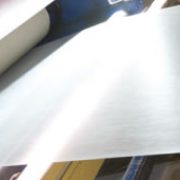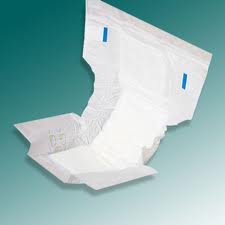Health Care




 Nonwovens were originally thought of as low-price substitutes for traditional textiles and made on converted textile processing machinery, where traditional textiles are generally made in a weaving process, the weaving is omitted in nonwovens. Nonwovens are specifically engineered to provide specific function, for single or short-term use and often to approximate the appearance, texture and strength of conventional woven and textile fabrics at a cost effective price. The nonwoven industry has grown from developments in the textile, paper and polymer processing industries, as well as branches of engineering and the natural sciences.
Nonwovens were originally thought of as low-price substitutes for traditional textiles and made on converted textile processing machinery, where traditional textiles are generally made in a weaving process, the weaving is omitted in nonwovens. Nonwovens are specifically engineered to provide specific function, for single or short-term use and often to approximate the appearance, texture and strength of conventional woven and textile fabrics at a cost effective price. The nonwoven industry has grown from developments in the textile, paper and polymer processing industries, as well as branches of engineering and the natural sciences.
Nonwovens are not based on yarns and (with frequent exceptions) do not contain yarns. They are based on webs of individual fibers. Nonwovens are different than paper in that nonwovens usually consist entirely or at least contain a sizeable proportion of long fibers and/or they are bonded intermittently along the length of the fibers. Although paper consists of fiber webs, the fibers are bonded to each other so completely that the entire sheet comprises one unit. In nonwovens we have webs of fibers where fibers are not as rigidly bonded and to a large degree act as individuals
 Nonwovens is now the fastest growing sector in textile materials. Some of the most common products made with nonwovens include: diapers, sanitary napkins, sterile gowns, wipes, coverings, automotive headliners, insulation, geotextiles, etc. Hygiene products is the largest category.
Nonwovens is now the fastest growing sector in textile materials. Some of the most common products made with nonwovens include: diapers, sanitary napkins, sterile gowns, wipes, coverings, automotive headliners, insulation, geotextiles, etc. Hygiene products is the largest category.
Nonwovens are, porous sheets or web structures that are made from separate fibers or from molten plastics or from plastic films by entangling fibers or filaments mechanically, thermally, or chemically.
| 1 | Web Formation | Drylaid | Carded; Airlaid |
| Spunmelt | Spunlaid (or spunbonded); Meltblown | ||
| Wetlaid | |||
| Other Technologies | Electrostatic spinning; Flash spun | ||
| 2 | Web Bonding | Chemical | |
| Thermal | |||
| Mechanical | Needlepunching; Hydro-entanglement; Stitchbonding | ||
| 3 | Finishing Treatments |
INDA DEFINITION:
INDA, North America's Association of the Nonwoven Fabrics Industry, describes nonwoven fabric as "sheet or web structures bonded together by entangling fibers or filaments, by various mechanical, thermal and/or chemical process. The INDA definition is most common today since nonwovens are generally made with plastics rather than paper fibers.
The various methods for bonding are:
EDANA DEFINITION:
EDANA, (The European Disposables and Nonwovens Association) defines a nonwoven as "a manufactured sheet, web or batt of directionally or randomly oriented fibers, bonded by friction, and/or cohesion and/or adhesion", but goes on to exclude a number of other materials including paper, and products which are woven or knitted, tufted or stitchbonded, and felted. An early definition which forms ISO 9092:1988 used to help distinguish nonwovens from paper materials made the following differentiation, "more than 50% by mass of its fibrous content is made up of fibers with a length to diameter ratio greater than 300 and its density is less than 0.40g/m3.
Copyright © 2024, Nonwoven Experts
